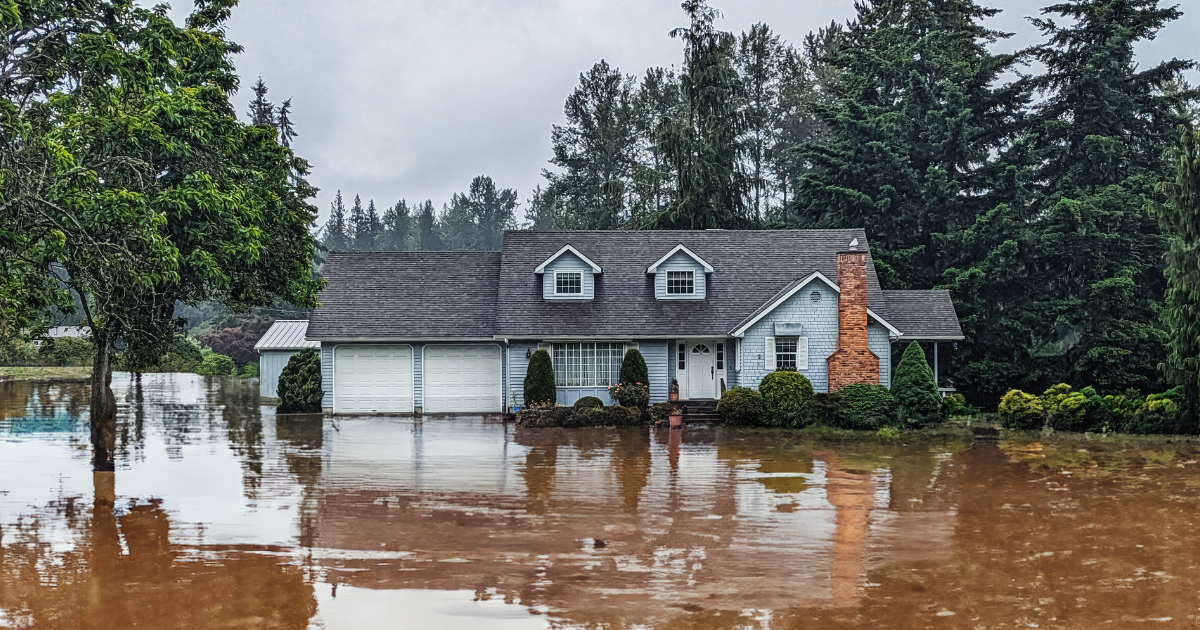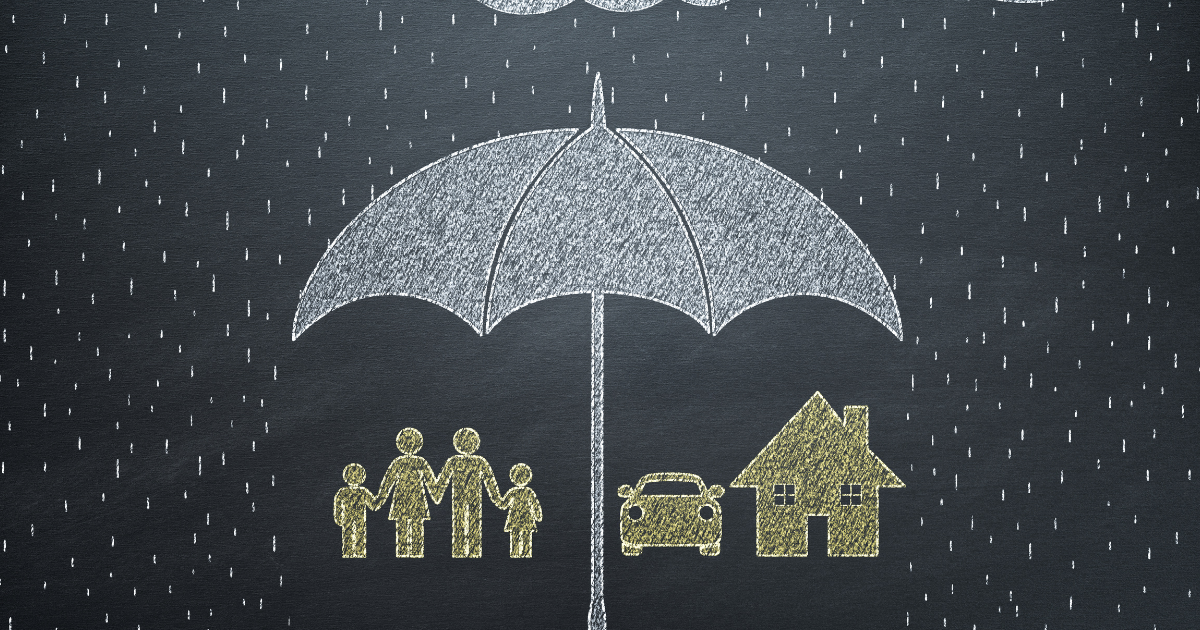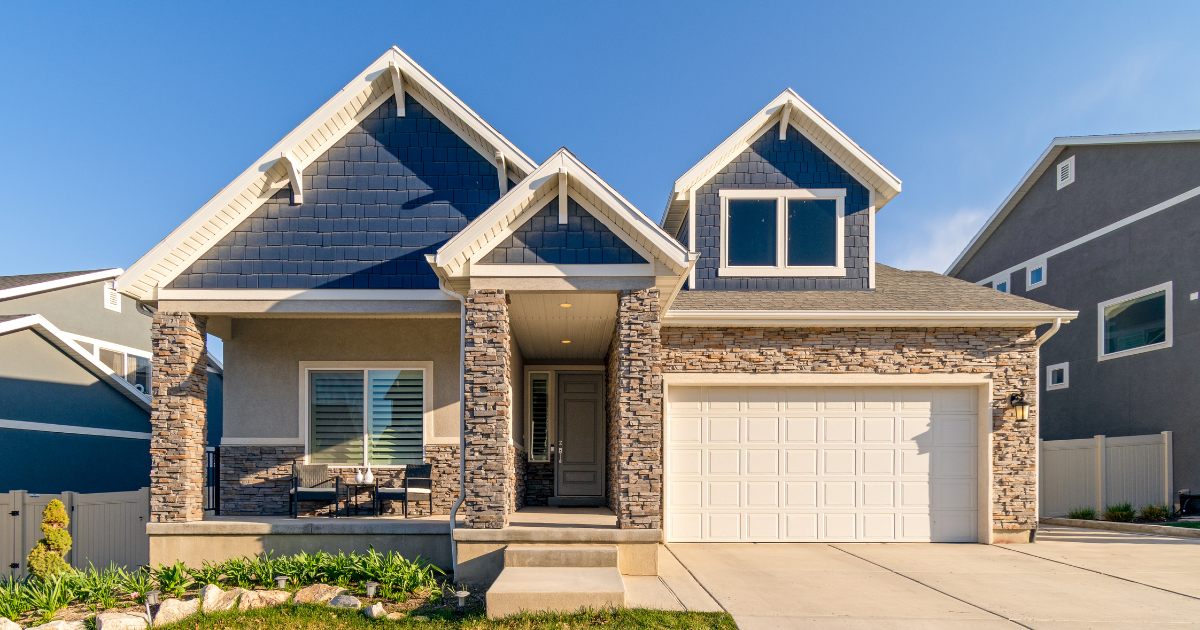What Is Homeowners Insurance?
Homeowners insurance is a financial safeguard that protects your home, your belongings, and your liability as a homeowner. If a fire breaks out, a storm causes damage, a guest gets injured on your property, or someone breaks in and steals valuables—your homeowners insurance is the policy that can cover the loss or legal liability.
If you’re buying a home, your mortgage lender will require you to have homeowners insurance before closing. But even if you own your home outright, having coverage is a smart and often essential part of protecting what is likely your biggest financial investment.
At CapCenter, we help homeowners find the right policy at the right price by comparing rates across 30+ insurance carriers. And when bundled with our Zero Closing Cost mortgage services, many clients see an average savings of 25% on their premiums. You can get started with a free quote right from our insurance quote tool.
Why You Need Homeowners Insurance
Homeownership comes with risks, and homeowners insurance is designed to mitigate them. A standard policy does more than just insure the structure—it can protect:
- The physical home (the dwelling)
- Detached structures (like a garage or shed)
- Personal property inside the home
- Liability if someone is injured on your property
- Additional living expenses if your home becomes temporarily uninhabitable due to a covered event
Without insurance, any of these could turn into a massive out-of-pocket cost. A house fire, for example, could not only destroy your home but displace you for months. Without coverage, you’d be left paying to rebuild and relocate on your own.
Lenders also require insurance to protect their financial stake. Until your mortgage is paid off, your lender technically owns part of your home—and they want to be sure it’s protected.
What Does Homeowners Insurance Cover?
A typical policy is broken into several categories:
Dwelling Coverage (Coverage A)
This covers the structure of your home—including walls, roof, foundation, and built-in appliances—if damaged by a covered peril such as fire, windstorm, hail, or vandalism. The coverage amount is usually based on the estimated cost to rebuild your home from the ground up, not its market value.
Other Structures (Coverage B)
Includes detached structures such as fences, sheds, or garages. This is usually a set percentage (often 10%) of your dwelling coverage.
Personal Property (Coverage C)
Covers your personal belongings—furniture, electronics, clothes, and more—if they are stolen or destroyed by a covered peril. Some categories, like jewelry or art, may have sub-limits unless you purchase additional coverage.
Loss of Use (Coverage D)
If your home is uninhabitable due to a covered event, this pays for additional living expenses like hotel stays, meals, and transportation while repairs are made.
Personal Liability (Coverage E)
Provides protection if someone is injured on your property or if you accidentally cause damage to someone else’s property. It can cover medical bills, legal defense, and settlements or judgments against you.
Medical Payments to Others (Coverage F)
Pays for minor medical bills if a guest is injured on your property, regardless of fault. This doesn’t cover your own injuries or household members’.
What’s Not Covered by Homeowners Insurance?
Just as important as knowing what’s covered is knowing what isn’t. Standard homeowners insurance does not typically cover:
- Flood damage – This requires a separate flood insurance policy, especially if you live in a FEMA-designated flood zone.
- Earthquakes and sinkholes – Often excluded and may need separate endorsements.
- Normal wear and tear or neglect
- Pest infestations (termites, rodents, etc.)
- Mold (in some cases)
- Mechanical breakdowns of appliances
Understanding these gaps is key to being truly protected. CapCenter’s insurance team helps clients evaluate optional coverages that might make sense based on location and property type—like flood insurance or additional coverage for valuable items.
How Much Coverage Do You Need?
The right amount of homeowners insurance depends on your home, belongings, and lifestyle. At minimum, you need enough to:
- Fully rebuild your home (replacement cost)
- Replace your possessions
- Cover your liability in case of a lawsuit
Here are a few benchmarks:
- Dwelling: Insure your home for the full rebuild cost—not the market value. Your insurance agent or lender will help calculate this based on construction cost per square foot in your area.
- Personal Property: Many policies default to 50–70% of your dwelling limit. Do a home inventory to ensure it’s enough.
- Liability: At least $300,000 is common, but consider increasing to $500,000 if you have significant assets to protect.
In some cases, an umbrella policy—which provides additional liability protection beyond your standard policy—may be appropriate. We walk clients through this during every quote review.
Homeowners Insurance vs. Home Warranty
These two products are often confused but serve very different purposes:
- Homeowners Insurance covers damage from unforeseen events like fire, theft, or wind.
- Home Warranties cover repairs or replacement of major home systems (like HVAC or plumbing) and appliances due to normal wear and tear.
A warranty can be helpful, but it’s not a substitute for insurance. For new buyers especially, we help distinguish between the two and ensure you’re not overpaying for overlapping or unnecessary coverage. Learn more here.
How Are Premiums Calculated?
Home insurance premiums vary significantly based on risk factors. Insurers will consider:
- Home’s age, size, and condition
- Construction materials and roof type
- Location (including crime rates, weather risks, and proximity to fire stations)
- Your credit score (in most states)
- Prior claims history
- Coverage limits and deductibles
At CapCenter, we shop over 30 carriers to help you find the best value for your home and your risk profile. Clients often discover they’ve been overpaying with their previous insurer—especially when bundling policies.
What Affects Your Insurance Rate (and How to Lower It)
If your premium seems high, you may be able to reduce it through:
- Raising your deductible – You’ll pay more out of pocket per claim but less annually.
- Bundling home and auto – Multi-policy discounts are often 15–25%.
- Installing safety devices – Burglar alarms, smoke detectors, and smart sensors can all help.
- Staying claims-free – Fewer claims = lower risk in the eyes of insurers.
- Improving your credit score – Insurers use credit-based insurance scores in most states.
We frequently see clients save hundreds annually after switching policies with CapCenter’s help—especially when pairing with a mortgage loan or refinance.
When to File a Claim (and When Not To)
Filing a claim isn’t always the best move. Before calling your insurance company, consider:
- Is the damage covered? If it’s general wear and tear, the answer is likely no.
- Is it worth the deductible? If repairs cost $800 and your deductible is $1,000, paying out-of-pocket avoids a claim on your record.
- Will this raise my premium? Multiple claims in a short period can trigger higher rates—or even a non-renewal.
If you’re unsure, our insurance team can talk through the situation and advise you on the best course of action—even if that means not filing.
How to Shop for the Best Policy
To get the best deal on homeowners insurance:
- Compare multiple carriers – Don’t just accept your lender’s suggested insurer or stick with your previous company.
- Evaluate coverage, not just price – Low premiums may mean bare-bones coverage.
- Ask about bundling and discounts – Good driving history? Security system? Newly renovated roof? All can help.
- Work with an advisor – At CapCenter, we guide you through the process to ensure you’re not over- or underinsured.
Use CapCenter’s insurance quote tool to instantly compare top carriers, review pricing, and ask questions with one of our licensed advisors.
CapCenter’s Advantage
We go beyond just helping you get a loan. Our in-house insurance team supports you with:
- Transparent policy comparisons
- Help understanding coverage limits and exclusions
- One-stop bundling of your home and auto policies
- Seamless coordination with your mortgage closing
- Ongoing support for future policy reviews or claim questions
Because we’re not tied to one insurance provider, we prioritize finding the right fit for you—not just the first option that gets you to closing.
Final Thoughts
Homeowners insurance is more than a checkbox on your mortgage closing checklist—it’s a powerful layer of protection for your home, your finances, and your peace of mind. Whether you’re buying your first home or reassessing coverage on your current one, it pays to work with a team that takes the time to get it right.
CapCenter can help you quote, compare, and save—whether you’re bundling insurance with your mortgage, refinancing to lower your payments, or just want a second opinion on your current policy. It’s just one more way we help you protect your home and your wallet.




